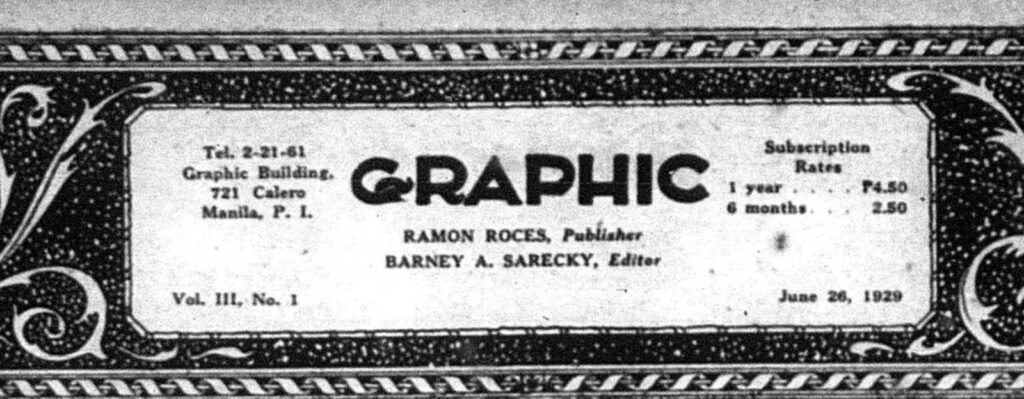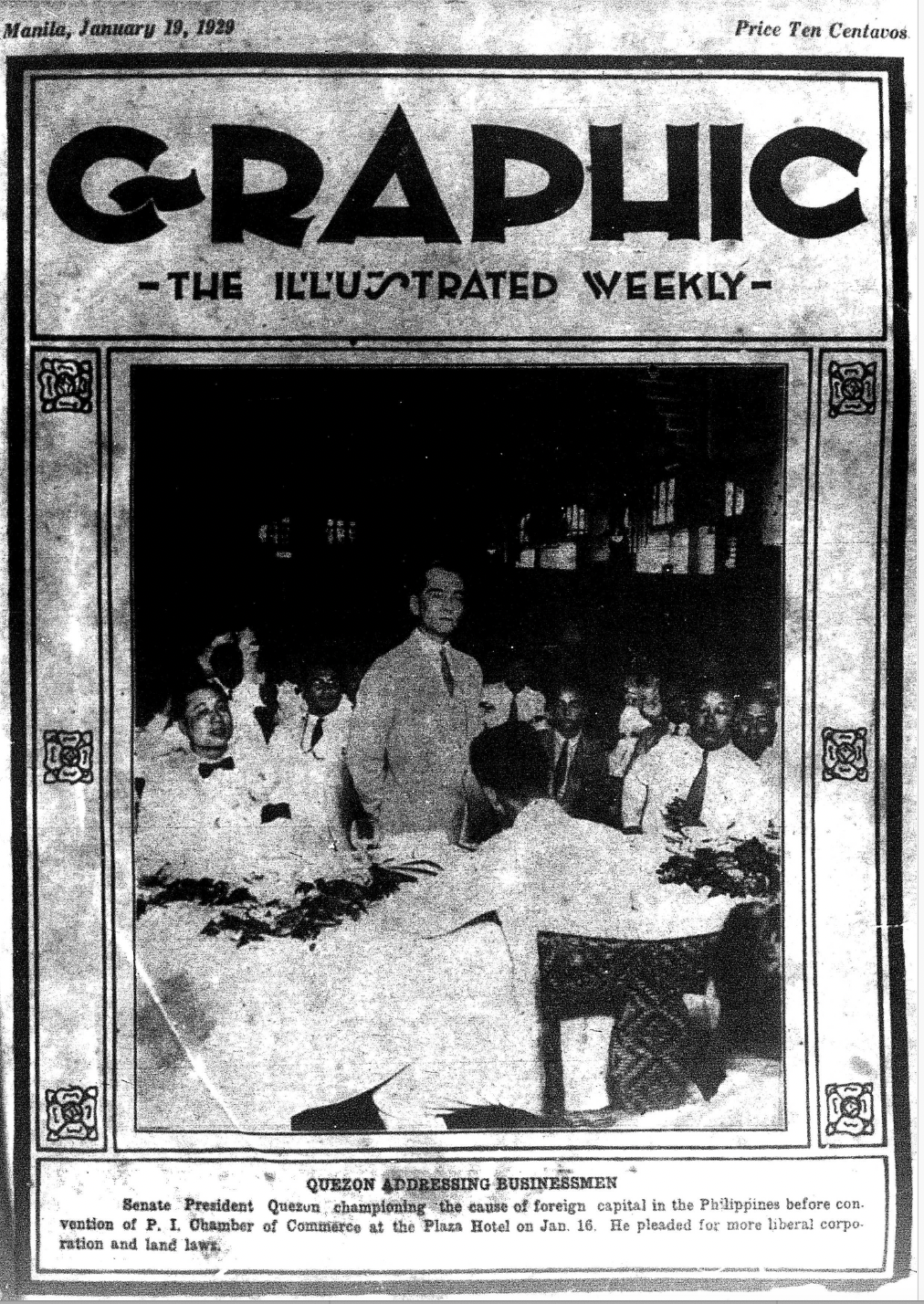As we count the months, weeks, days, and hours to the centennial year of the Philippines Graphic in June 2027, we will walk down memory lane. With every issue, we will present to our readers snatches of the distant past—captured in reprints of Graphic stories, editorials, columns, illustrations, and photos published during the first five decades of the magazine. It is our way of showing to our readers how unresolved issues and concerns travel across time and plant themselves squarely in our present and future. Hence, the need to learn. In the words of George Orwell: “Who controls the past controls the future. Who controls the present controls the past.”—Ed.
I found a 1929 Graphic issue at the National Library in Manila. Reading through it, one thing immediately stood out: Some articles were without bylines.
Sure, the names of the publisher, Ramon Roces and the editor, Barney A. Sarecky, were contained in a separate section found at the top of the staff box.

The names of the poetry and fiction contributors were there, together with the names of some of the Who’s Who in the Philippines.
Those who sent letters to the Graphic found their letters printed in full, together with their names and the town or city that they came from.
Dear Friend,
I know you to be an American citizen, born in some big city, but I would like to know your ancestry, if you will pardon the personal nature of the query —Virgile Floresque, Laoag, Ilocos Norte
Dear Virgile,
This is not the first time we have received a query concerning our extraction. Our first impulse is to treat the matter as strictly personal in the real sense of the term, but in view of the increasing number of queries, we are taking the liberty of appending a brief autobiography of the editor. His parents and their forebears as far as he knows, were Russian Jews. You are right about my being born in an American City. I hail from New York, the great Melting Pot. I am indeed sorry not to be able to publish your letter in full, but shall keep it as a memento of your fine spirit. Your poem is still under consideration —Editor
HIDDEN IDENTITIES
But there was one columnist, whose name did not appear. A number of articles and reports also did not have bylines or even taglines.
I wasn’t the first one to notice this. A subscriber wondered about the same thing, some ninety-six years ago.
A Pedro Orbon sent a letter to the Graphic’s “Strictly Personal” section, and asked: “Why do they (writers) hide their identities?”
In the silence of the National Library, with the peace broken only by the whirring of the microfilm reel, the question Orbon raised made me think that perhaps, his seemingly innocent query led to secrets that would reveal more about how journalists in those days conducted their business.
But maybe, it was just the effect of the sepia-toned microfilm projector and the fact that I was viewing old documents, with some sections barely readable and some completely destroyed. I began to feel more and more like a spy uncovering a conspiracy.
There was a regular section in the old Graphic magazine called “Weekly Mirror of Thoughts and Events,” penned by a man named A.B. Legislator. He wrote his honest takes on certain events that happened during that week.
His comments were sharp, piercing, and blunt.
Subscribers asked who he was, but the Graphic refused to name him.
GUESSING CONTEST
It became a game of sorts. Some subscribers would even send out their guesses. Nobody guessed correctly.
“We were hoping that people would stop this guessing contest, because it makes us feel guilty, not to be able to divulge his identity at this time,” the Editor wrote to one subscriber, who claimed that A.B. Legislator was “none other than one of the deans” of the University of the Philippines.
The editor said that the subscriber was “miles from the truth.” Still, he volunteered that A.B. Legislator was a prominent government official.
The more that I thought about it, the more plausible it seemed to me that there is some conspiracy lurking around. Why else would you not include the name of the person who wrote the article?
Alas, the truth was plain, simple, and straightforward.
SIMPLE EXPLANATION
Going back to the query regarding the magazine being cloaked in too much secrecy, the Editor responded:
“Your generalization is not fair to Graphic. There is only one person writing under a “veil of secrecy.” We receive articles now and then, authors of which are unknown to us, but it is safe to say that the number of “secret” contributors is negligible.”
Those who wrote the articles chose not to send their names alongside their pieces. It is that plain and simple.
Occam’s Razor. The simplest explanation is usually the best one.
At the back of my head, I still would have preferred if it ended up something more shocking and spicier than that. I would even settle with the answer being “a secret feud between the editor and the sender.”
My disappointment at the simplicity of the truth echoes the common urge of any human being to need complex answers for even the simplest questions.
Nonetheless, had it been a secret conspiracy, it would have been a good one.
READ THE ARCHIVE STORY ATTACHED TO THIS:




